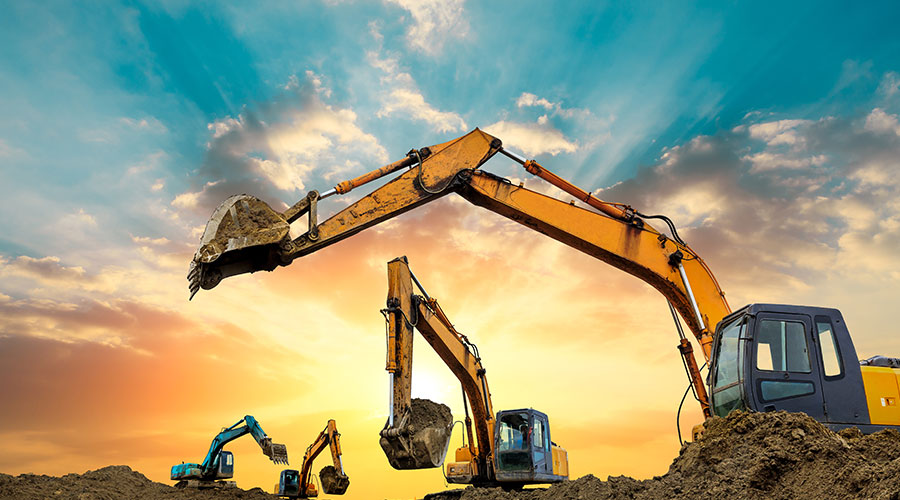« Back to Facilities Management HVAC Category Home
Planning to Skip Chiller Maintenance? Think Again
December 1, 2017
- HVAC
HVAC professionals considering shutting down chillers for the season should reconsider, given the importance of chiller maintenance. The process might seem overwhelming, expensive and lower on the list of priorities while prepping institutional and commercial facilities for the cold months ahead, but its benefits can be substantial.
“Spending the time to proactively clean and maintain your chiller in the fall can prevent headaches and provide better results when you go to start it back up in the spring,” says Tim Kane, president of Goodway Technologies. “It also gives facility managers the opportunity to identify any issues or problems that can be fixed in the off season.”
Chiller tubes are susceptible to the buildup of scale and other sediments and residue, including mud, slime, sludge, and algae. These inefficiencies can have a major impact on an organization’s bottom line.
Chillers can expend up to an additional 30 percent in energy through inefficiencies, according to U.S. Department of Energy, which recommends that technicians perform certain chiller maintenance operations — including cleaning and Eddy current testing of condenser and evaporator tubes — at least once a year.
Managers can incorporate these tips into an effective chiller maintenance program.
The right equipment
A variety of chiller tube cleaning equipment and accessories are simple to use and portable, and they can be easily operated by one person. Water treatment alone does not keep tubes clean. Even the smallest amount of scale can lower chiller efficiencies.
Regular cleaning and inspections should go hand-in-hand with water treatment. Managers should research their options to find the equipment that provide a solution for chiller maintenance needs and meet the available budget. These tools can help help technicians perform optimum chiller cleaning:
- Rotary tube cleaner. This tool is ideal for cleaning the tubes. The units feed water to a rotating cleaning brush or tool, flushing out deposits as they are loosened. Newer, specialized rotary tube cleaners can deploy corrosion inhibitors and antimicrobials while brushing is in effect. Electric and air power models are available to meet any applications.
- Chemical descaler. These descalers are effective in dissolving calcium, lime, rust and other types of deposits from passages that come into contact with water. To reduce the risk of damage, managers need to review the label to see the base metals with which the descaler can be used.
- Brushes. Attaching brushes to the tube cleaner can help remove soft and light scale deposits. While brushes are required for any tube cleaning, it is important to understand the substances that build up inside tubes to select the correct type of brush. For example, a light to medium buildup that occurs with algae, mud or slime requires a different brush than a crustier buildup resulting from scale and other mineral deposits.
Chiller maintenance plan
A chiller maintenance plan or checklist is an ideal way for managers and technicians to proactively stay on track and make sure equipment runs efficiently and properly. Managers should pull together a team of individuals involved with performing facility maintenance and discuss the steps to take to reach optimal performance. These steps include:
Maintaining a daily operating log. The Federal Energy Management Program (FEMP) recommends updating the log four times a day to monitor key operating parameters that will indicate if any problems are developing while also measuring efficiency gains.
Keep tubes clean. Fouling and scale can reduce efficiency. Regular monitoring can help technicians recognize when tube cleaning should take place; it is recommended at least once a year. Pressure loss can also indicate tube corrosion.
Ensuring a leak-free unit. Leaks can affect the operation of the system and release hazardous refrigerants.
Sustaining proper water treatment. Failure to perform chiller maintenance also can affect water quality. It does not take much fouling or scale buildup to start impacting the efficiency of the system. Technicians need to keep a close eye on water treatment and chemistry.
Analyzing oil and refrigerant. Refrigerant levels should stay within the manufacturer’s recommended levels. Using an air-purge timer — increases in air-purge time might indicate a leak — as well as checking the refrigerant sight-glass for bubbles and checking at all joints and connections with a gas analyzer can help technicians track refrigerant levels.
Cooling tower considerations
Chiller systems are one of the more complex pieces of equipment in a facility, so it is worth making the investment to take care of it. A cooling tower’s performance has a direct link to chiller efficiency. In fact, for each degree that condenser supply temperature is above design specifications, chiller efficiency is reduced by 2 percent.
When left unmaintained, the warm water in cooling towers can promote algae growth, and flash evaporation can produce hard scale deposits and calcium fouling. Cooling tower fill acts a massive air scrubber, encountering dust, pollen and insects, which contribute to bacteria growth.
This situation creates a breeding ground for diseases such as Legionella. As with chillers, regularly cleaning cooling towers can decrease the chances of equipment corrosion or breakdowns and can increase plant efficiency.
Founded in 1966, Goodway Technologies — www.goodway.com — has been delivering better maintenance solutions for more than 50 years. Goodway Technologies provides innovative maintenance solutions for a variety of industries, including commercial and residential HVAC, food and beverage processing, power generation, and manufacturing. Over the decades, Goodway, has worked with customers to create better solutions for chiller and boiler tube cleaning, cooling tower maintenance cleaning evaporator and condenser coils, and practically everything else for the care and maintenance of HVAC systems.







